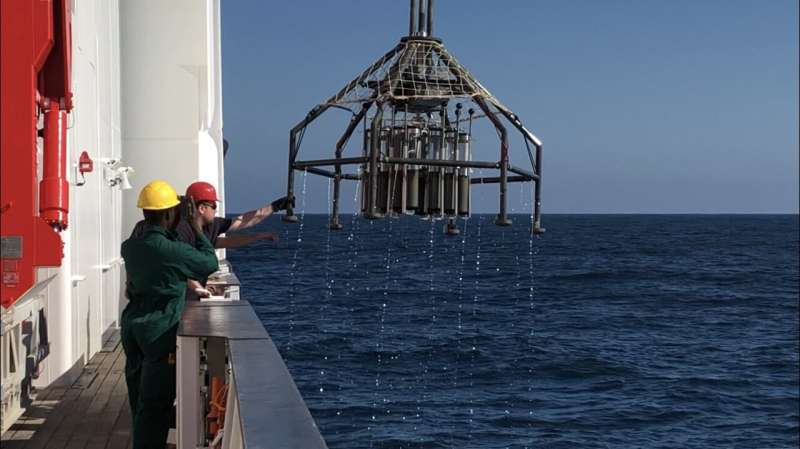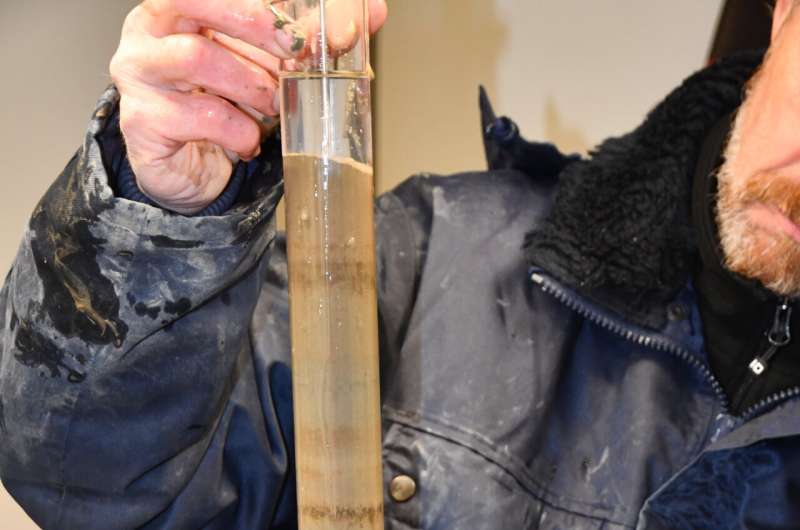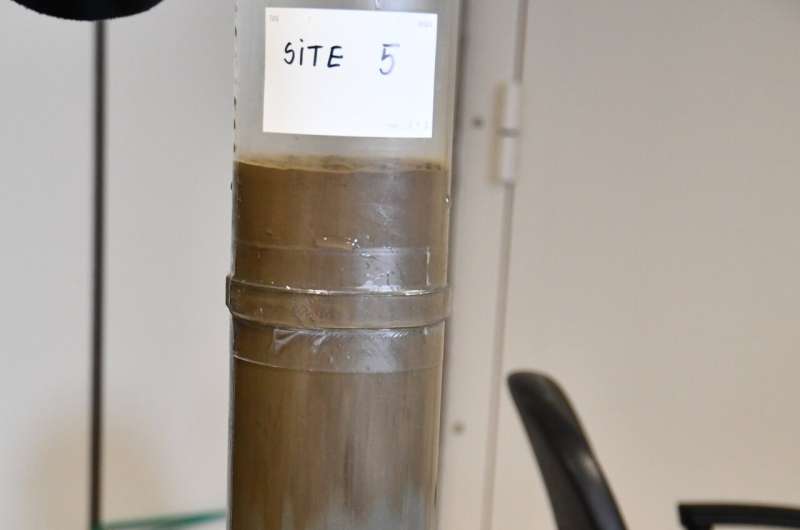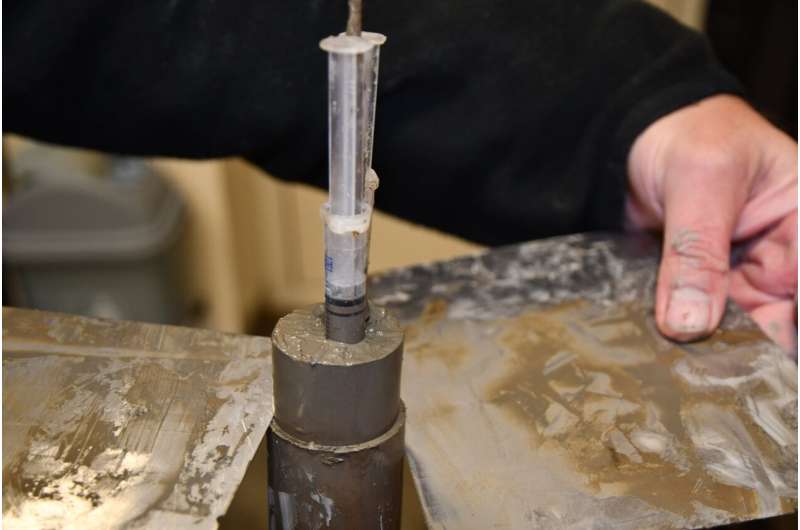This article has been reviewed according to Science X's editorial process and policies. Editors have highlighted the following attributes while ensuring the content's credibility:
fact-checked
peer-reviewed publication
trusted source
proofread
Environmental toxin PCB found in deep sea trench

PCB has been banned in most countries since the 1970s, but that doesn't mean it no longer exists. Now, deep-sea researchers report that they have found PCB at the bottom of the Atacama Trench in the Pacific Ocean.
During their expedition to the deep-sea trench, the research team retrieved sediment cores and analyzed them for PCB occurrences at five different locations in the trench. All the samples of surface sediment analyzed contained PCB.
The study, led by Professor Anna Sobek from the Department of Environmental Science at Stockholm University and Professor Ronnie N. Glud, director of the Danish Center for Hadal Research at the University of Southern Denmark, has been published in the journal Nature Communications.
PCB is short for Poly-Chlorinated Biphenyls, which covers 209 different substances. They were introduced in the 1930s and have been used primarily in building materials and technical components, but are now banned in most countries and classified as a highly persistent environmental toxin. PCB can be carcinogenic and cause reproductive harm.
Although the world's production of PCBs dropped significantly in the 1970s, the substances still pose an environmental threat. In 2018 researchers reported, for example, that half of the world's killer whale populations were weakened by PCB.

Another study has found that scavenging amphipods in the deep sea contained large amounts of PCBs.
"It is thought-provoking that we find traces of human activity at the bottom of a deep-sea trench; a place that most people probably perceive as distant and isolated from our society," says Professor Ronnie N. Glud, who has participated in more than 10 expeditions to deep-sea trenches around the world.
These expeditions have helped to dispel the myth that deep-sea trenches are unaffected by what happens on the surface and have provided insight into the surprisingly rich, active, and varied life at the greatest depths of the ocean. The studies have also shown that deep-sea trenches accumulate large amounts of organic material, contributing to the oceans' ability to absorb carbon released into the atmosphere through fossil fuel burning.
However, not only organic material accumulates in deep-sea trenches, which are also called hadal trenches. For example, the Danish Center for Hadal Research reported in 2021 that mercury also accumulates in the trenches' sediments, and in 2022, a similar announcement was made about black carbon, which is particles that are mainly formed by the combustion of fossil fuels.

The concentration of PCBs in samples from the Atacama Trench is not alarmingly high, according to Ronnie N. Glud. He points out that much higher concentrations have been found in places like the Baltic Sea, North Sea, and Tokyo Bay. Concentrations 300–1500 times higher have been measured in the Baltic Sea.
"These are places with a lot of human activity, so one would expect that. The Atacama samples do not show very high concentrations but considering that they were retrieved from the bottom of a deep-sea trench, they are relatively high. A priori no one would expect to find pollutants in such a place," says Ronnie N. Glud.
PCBs are hydrophobic, meaning they are not very soluble in water. Instead, they bind to organic material that sinks to the bottom.
"The Atacama trench is located in an area with relatively high production of plankton in surface waters. When the plankton dies, it sinks to the bottom of the ocean," explains Anna Sobek.

In addition, large amounts of material are transported down the steep slopes and deposit in the deepest areas.
Some of the organic material that reaches the bottom of the Atacama trench is eventually decomposed by microorganisms, and as a result, PCBs accumulate in sediment.
PCBs are persistent compounds that are slowly redeposited over time, which is why increasing concentrations can be found in inaccessible areas such as the hadal trenches, even though they were largely banned worldwide in the 1970s.
"Unlike coastal areas where PCB concentrations are typically higher in deeper sediment layers deposited 50 years ago, PCB concentrations in hadal sediments are highest in the upper sediment layers, indicating that PCBs have only recently reached the deeper trenches and that concentrations have not yet peaked: We may see higher concentrations in a few years," says Ronnie N. Glud.
The deep-sea trenches are home to many different microorganisms and animals that have adapted to the extreme living conditions. Perhaps they are also home to organisms that can metabolize the pollutants that are deposited there.
That is one of the focus points of Danish Center for Hadal Research and for this research, the center holds a solid stock of frozen sediment samples collected from expeditions to different deep-sea trenches in 2021 and 2022.
"We are interested in finding out if PCBs are also present in other deep-sea trenches or if they are unique to the Atacama trench. We also want to investigate the bacteria that live down there and learn more about their function," says Ronnie N. Glud.
The deep-sea trenches are located in the hadal zone of the ocean, which lies at depths of 6-11 km. There are about 27 deep-sea trenches, also called hadal trenches, named after the Greek god Hades, who ruled the underworld.
More information: Anna Sobek et al, Organic matter degradation causes enrichment of organic pollutants in hadal sediments, Nature Communications (2023). DOI: 10.1038/s41467-023-37718-z
Journal information: Nature Communications
Provided by University of Southern Denmark




















